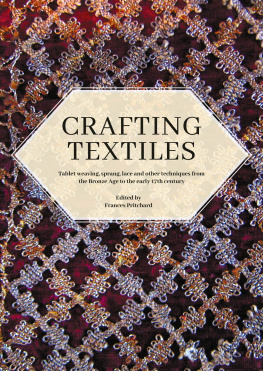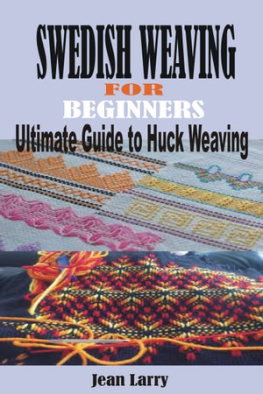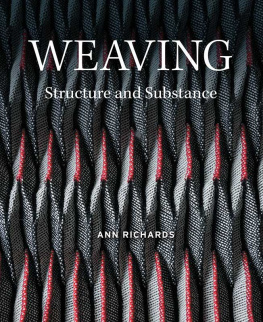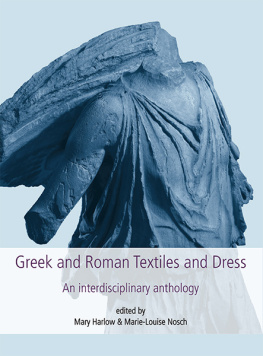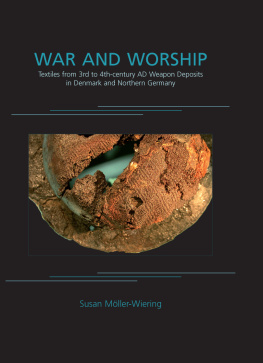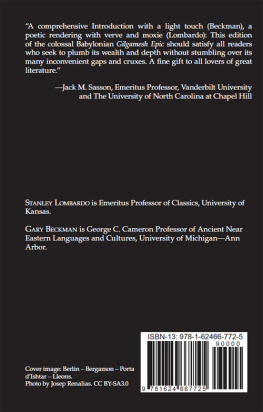

Published in the United Kingdom in 2021 by
OXBOW BOOKS
The Old Music Hall, 106-108 Cowley Road, Oxford, OX4 1JE
and in the United States by
OXBOW BOOKS
1950 Lawrence Road, Havertown, PA 19083
Oxbow Books and the individual contributors 2021
Paperback Edition: ISBN 978-1-78925-759-5
Digital Edition: ISBN 978-1-78925-760-1 (epub)
A CIP record for this book is available from the British Library
Library of Congress Control Number: 2021942856
All rights reserved. No part of this book may be reproduced or transmitted in any form or by any means, electronic or mechanical including photocopying, recording or by any information storage and retrieval system, without permission from the publisher in writing.
Printed in the United Kingdom by Short Run Press, Exeter
For a complete list of Oxbow titles, please contact:
UNITED KINGDOM
Oxbow Books
Telephone (01865) 241249
Email:
www.oxbowbooks.com
UNITED STATES OF AMERICA
Oxbow Books
Telephone (610) 853-9131, Fax (610) 853-9146
Email:
www.casemateacademic.com/oxbow
Oxbow Books is part of the Casemate Group
Front cover: Detail of bobbin-made braid, c. 1600, Ytterjrna church, Sweden. Lena Dahrn
Back cover: From top to bottom: Tablet-woven band from Hallstatt salt mine, c. 800-400 BC ( Natural History Museum Vienna, photo A. Rausch); Tablet-woven band from Drrnberg salt mine, c. 350 BC ( Natural History Museum Vienna, photo A. Schumacher); Marble bust, The Cloisters Collection 66.25, Metropolitan Museum of Art ( Metropolitan Museum of Art); Modern sprang hairnet ( Anne Kwaspen)
Contents
Karina Grmer
Claire Grentet-de-Saluneaux and Fabienne Mdard
Frances Pritchard
Regula Schorta
Petra Linscheid
Anne Kwaspen and Kristin South
Dagmar Drinkler and Carol James
Joy Boutrup
Beatrix Nutz, Rachel Case and Carol James
Lena Dahrn
Katrin Kania
Acknowledgements
This volume, which is a product of the Early Textiles Study Group, is the result of the input of many people, who have generously given hours of their time to it. Penelope Walton Rogers, current chairman of the Early Textiles Study Group, ably supported the publication process and due to her computer skills came to the rescue on many occasions. Michael Pollard ensured that all the images met the requirements of the publisher. Greta Bertram, Curator, Crafts Study Centre, very kindly supplied the image of Peter Collingwood during a very difficult period. Grateful thanks are due to the specialists who peer reviewed the individual papers. Grants from the Pasold Research Fund and the Abegg-Stiftung Foundation enabled a considerable number of colour images to be included in the volume making it a more worthwhile resource. Julie Gardiner and the team at Oxbow Books guided the volume through to publication. The greatest debt is owed to the authors of each chapter who have waited patiently to see their research in print.
Introduction
This book is dedicated to Peter Collingwood, who was an inspiring weaver, teacher and author, and whose curiosity about textile structures led him to analyse ancient and historic textiles as well as creating new ones. An exceptional craftsman of the second half of the twentieth century, among his outstanding achievements was to invent a new type of loom and to take weaving techniques in fresh directions.
His interest in ancient textiles is self-evident from his publications and often formed the starting point for his creativity. In the late 1980s he became a member of the Early Textiles Study Group and actively contributed to its mission. Not only did he lecture at one of the Groups conferences held in Manchester in 1994 but he also invited members to join him at his home at Nayland, Essex, where he discussed items from his own collection gathered from all parts of the world with considerable enthusiasm and technical insight.
His books have been mainstays of much textile research as demonstrated by the range of papers included in this volume. By writing on techniques such as sprang and ply-split braiding he brought a fresh impetus to these subjects which have been taken up creatively as well as aiding a better understanding of ancient methods.
The first of his series of books on techniques was rug weaving and although the study of early rug-making attracts considerable interest and archaeological material has been explored to some extent, it has not proved possible to obtain a paper containing new research on the subject here. Sprang was his next choice of subject for investigation. This was not a technique that he particularly relished doing himself but his book provided a sound basis for analysing many aspects of the technique, which he developed alongside the noted Swiss scholar Nomi Speiser, and it has acted as a stimulus to all subsequent research in this field. The Techniques of Tablet Weaving first published by Faber and Faber in 1982 became a best seller and led the way to much experimentation and creative work as well as providing a guide to reconstruction attempts. This in turn has led to further research and has enabled the subject to be studied in much greater depth.
This publication demonstrates the wealth of new research carried out on an international scale into subjects in which Collingwood took such an active interest. Some discuss recently excavated material while others investigate textiles that have been stored for many years in museum collections and offer new interpretations and insights informed by technical expertise. Early versions of eight of the chapters were presented at an Early Textiles Study Group conference held at the Wellcome Collection, London, in October 2014. To these have been added research by Claire Grentet-de-Saluneaux and Fabienne Mdard in France, Petra Linscheid in Germany, and Anne Kwaspen and Kristin South in Egypt. It is a great sadness that Collingwood is no longer here for us to share this volume with him but his legacy in the field of early textiles continues to act as inspiration to textile scholars and craft practitioners.
List of contributors
J OY B OUTRUP
Design School Kolding
Kolding
Denmark
R ACHEL C ASE
Independent scholar
Hampden
USA
L ENA D AHRN
Independent scholar
Stockholm
Sweden
D AGMAR D RINKLER
Textile Conservator
Bayerisches National Museum
Munich
Germany
C LAIRE G RENTET - DE -S ALUNEAUX
Independent scholar
France
K ARINA G RMER
Curator
Prehistoric Department
Natural History Museum
Vienna, Austria
C AROL J AMES
Independent scholar
Winnipeg
Canada
K ATRIN K ANIA
Independent scholar
Erlangen
Germany
A NNE K WASPEN
Marie S. Curie Fellow
Centre of Textile Research
Copenhagen
Denmark
P ETRA L INSCHEID
Research Assistant
Institute for Archaeology & Anthropology
University of Bonn
Germany
F ABIENNE M DARD
Independent scholar
France
B EATRIX N UTZ
Independent scholar
Schwaz
Austria
F RANCES P RITCHARD
Honorary Research Fellow
The University of Manchester
UK
R EGULA S CHORTA
Director
The Abegg-Stiftung
Riggisberg
Switzerland
K RISTIN S OUTH
BYU Egypt Excavation Project
Brigham Young University
Utah
Next page
